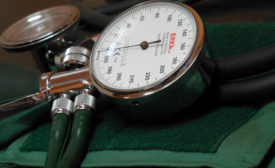Workplace Health
What's your company policy on e-cigarettes?
Survey highlights need for clear policies on 'vaping' vs smoking
April 17, 2017
Take a free test that could possibly save your life
The American Heart Association wants you to check your blood pressure
April 13, 2017
Experts: Make public parks serve public health
The "built environment" can be key to fitness
April 6, 2017
Cold symptoms feel worse when people feel lonely
Quality, not quantity, of relationships makes a difference
April 6, 2017
Never miss the latest news and trends driving the safety industry
eNewsletter | Website | eMagazine
JOIN TODAYCopyright ©2024. All Rights Reserved BNP Media.
Design, CMS, Hosting & Web Development :: ePublishing









